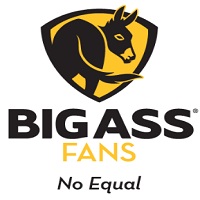
Big Ass Fans
In 1999, the Big Ass Fan Company was born. Kind of. Then called the HVLS Fan Co. (that’s High Volume, Low Speed—catchy, right?), we first made our mark selling massive ceiling fans that spun slowly but moved astounding amounts of air. The fans kept large spaces that lacked air conditioning, such as factories and dairy barns, feeling cool and comfortable—and soon enough, plenty of other customers wanted in.